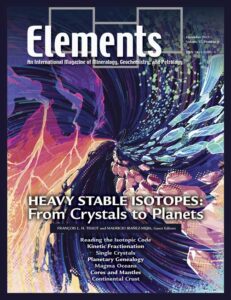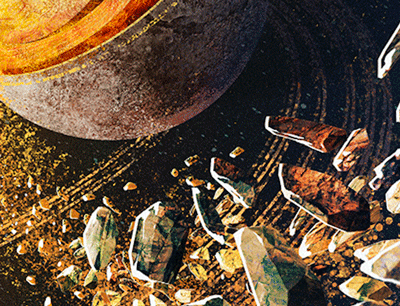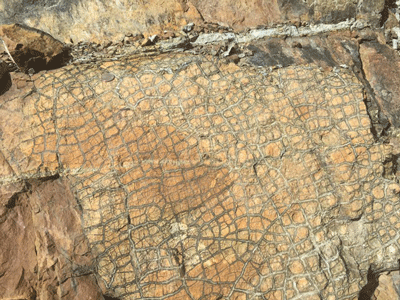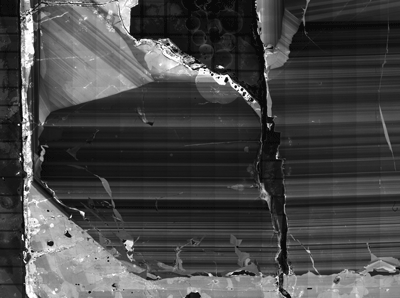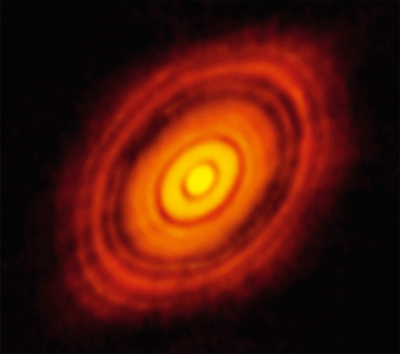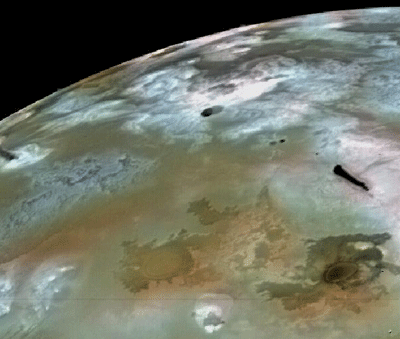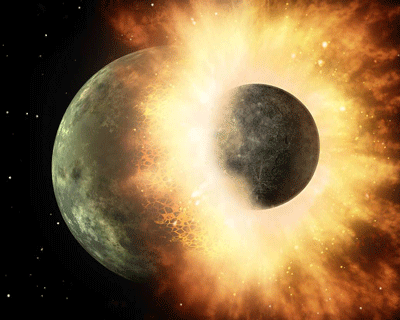Heavy Stable Isotopes: From Crystals to Planets
François L.H. Tissot, and Mauricio Ibañez-Mejia – Guest Editors
Table of Contents
Since their discovery in 1913, stable isotopes have become formidable tracers of physicochemical processes at all scales. Steady advances in mass spectrometry have allowed isotopic inquiries to move from the so-called “traditional” systems (i.e., H, C, N, O, and S) to heavier “nontraditional” systems (e.g., Fe, Mo, Ti, Zr, U) whose diverse geochemical characteristics are providing novel and complementary insights. Moving from micron-size systems (single crystals) to planetary-size bodies, the articles in this issue will explore the enormous range of temporal and physical scales over which heavy stable isotopes have provided paradigm-shifting insights into the evolution of our planet and solar system. We will also highlight new frontiers where novel stable isotope systematics appear particularly promising for unraveling long-standing questions.
- Reading the Isotopic Code of Heavy Elements
- Beyond Equilibrium: Kinetic Isotope Fractionation in High-Temperature Environments
- Unlocking the Single-Crystal Record of Heavy Stable Isotopes
- Planetary Genealogy
- Planetary Evaporation
- Ironing Out Isotopic Differences Among Rocky Bodies
- Forming Earth’s Continental Crust: A Nontraditional Stable Isotope Perspective
v18n1 Heavy Stable Isotopes: From Crystals To Planets
GUEST EDITORS: Patricia L. Clay (University of Manchester, UK) and Hirochika Sumino (University of Tokyo, Japan)
The halogen group elements (F, Cl, Br, and I) are common in the terrestrial inventory, though often present in trace amounts in many Earth and planetary materials. The halogens play a key role in a variety of geologic environments and processes, from mineralization to their influence on the composition of Earth’s atmosphere when released as oceanic, volcanogenic, and anthropogenic emissions. Halogens act as “fingerprints” of fluid mediated processes on Earth and other planetary bodies. These “bioessential” elements are also critically important to human health. In this issue of Elements, we explore the role that the halogens play in shaping diverse planetary systems, from the surface of planets to their interiors. We also review the techniques that are suitable for the analysis of halogen elements and of isotopes of Cl and Br in terrestrial and extraterrestrial materials.
- Halogens: Salts of the Earth
Patricia L. Clay (University of Manchester, UK) and Hirochika Sumino (University of Tokyo, Japan) - A Halogen Record of Fluid Activity in the Solar System
Jessica J. Barnes (University of Arizona, USA) and Michael E. Zolensky (NASA Johnson Space Center, USA) - Sediments, Serpentinites, and Subduction: Halogen Recycling from the Surface to the Deep Earth
Mark A. Kendrick (University of Queensland, Australia) and Jaime D. Barnes (University of Texas at Austin, USA) - Halogen Behavior at Depth: Insights from Experimental and Observational Constraints
Bastian Joachim-Mrosko (University of Innsbruck, Austria), Tatsuhiko Kawamoto (Shizuoka University, Japan) and Hélène Bureau (IMPMC, CNRS, Sorbonne Université, MNHN, France) - Natural Halogen Emissions: Sources, Flux, and Environmental Impact
Anita Cadoux (Université Paris-Saclay France), Susann Tegtmeier (University of Saskatchewan, Canada) and Alessandro Aiuppa (Università di Palermo, Italy) - Developments in Halogen Abundance and Isotope Measurements
Ray Burgess (The University of Manchester, UK), Mitsuru Ebihara (Waseda University, Japan) and Hans G. M. Eggenkamp (Eberhard-Karls-Universität Tübingen, Germany)
- Shedding Light on the European Alps (February 2021)
- Speleothems (April 2021)
- Exploring Earth and Planetary Materials with Neutrons (June 2021)
- Geoscience Beyond the Solar System (August 2021)
- Carbonatites (October 2021)
- Heavy Stable Isotopes: From Crystals to Planets (December 2021)
- Halogens: From Planetary Surfaces to Interiors (February 2022)
- Organic Biomarkers (April 2022)
- Water in Planetary Bodies (June 2022)
- Cascade Suduction Zone (August 2022)
- Cement and Concrete: From the Romans to Mars (October 2022)
- Exploring Jupiter’s Moon Io (December 2022)



